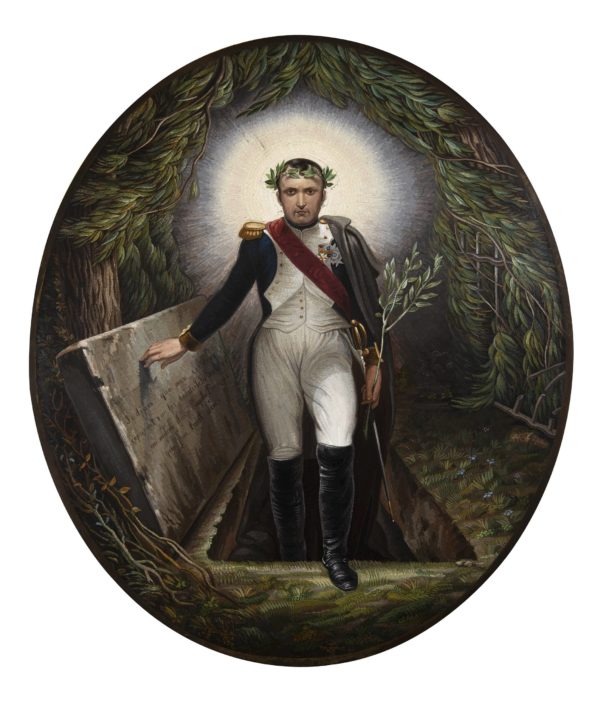Napoleon Coming out of his Tomb, 1869
Micro-mosaic, H. 0.64 m; W. 0.55 m
Signed and dated: S.PC/DE ROSSI/ROMA/1869
Provenance: Private collection
Around the return of Napoleon’s remains in 1840, Horace Vernet delivered a painting to the printmaker Jean-Pierre Jazet (1788-1856) for engraving. It showed Napoleon Coming out of his Tomb, an allegory of the emperor which clearly reuses the iconography of Christ. The painting is no longer known today but the composition was very quickly circulated in various forms: snuffboxes, scarves… They show the fervour that accompanied the Return of the Remains, a fundamental moment in the development of Napoleon’s legend, interpreted at the time as a resurrection of the Emperor and the prestige of the Empire.
The term micro-mosaic refers to a mosaic of which the tiny elements of spun glass and fragments of coloured enamel (smalti filati) that comprise its decoration are very carefully assembled so as to make the joints almost invisible. Roman micro-mosaics are composed of regular forms, while in Venice a wide variety is used. After being assembled and glued, the pieces are waxed and polished. In Rome the Studio Vaticano del Mosaico was founded in 1727 and still operates today. The golden age of micro-mosaic was from the end of the 18th to the early 19th century. In 1820, in Rome there were over 20 workshops. One of the most illustrious of these was run by Giacomo Raffaelli (1753-1836).
